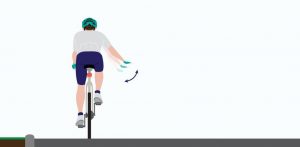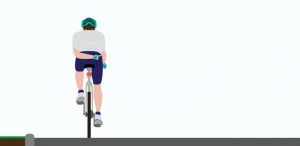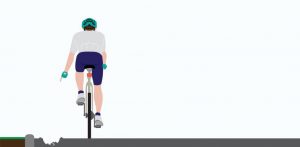Group Ride Etiquette
Group rides are not only social, but a great way to train, improve fitness and benefit from the experience of other riders. However, they require your full concentration and co-operation, so please take notice of instructions from the ride leader and the following guide on group ride etiquette.
Personal Safety
Members are strongly advised to wear a cycle helmet. Those under 18 years of age must wear a helmet when on club rides.
Ensure that your bike is in good working condition.
Please carry identification with you, including an emergency contact name and phone number, as well as details of any medical conditions in the event of an incident. Your mobile phone may also have the option to include ICE details on the screen lock.
Individuals taking part in group activities do so at their own risk. All riders are recommended to have appropriate Third Party insurance; this can be provided though British Cycling membership.
Know What to Expect
Understand the demands of the ride, including distance, pace and weather conditions before setting out. Ensure you have the appropriate clothing, drink, food and spare inner tube (or two), tyre levers and a pump. In wet weather and during winter, consider fitting mudguards for the sake of those behind you.
Most of our club rides are ‘no drop rides’, where nobody is left behind. We will regroup at the top of climbs and stop for punctures or mechanicals. However, some training rides will be faster paced, particularly in the latter stages and riders may get dropped.
Ride Formation
We ride two abreast when traffic and road conditions permit. This way the group is a compact unit which can ride efficiently, but easily move to single-file when needed to (for example to get past an oncoming car when the road is narrow or to let traffic past).
Ride as close to the rear wheel of the rider in front as you feel comfortable; however never overlap the rear wheel of the rider in front.
when on the front of the group, you’re responsible for communicating the direction you are going. If you don’t know, ask the ride leader.
When on the front, don’t half-wheel the rider next to you; ride with your front wheels level.
When pulling in to regroup or when stopping for a puncture, make sure you keep well in to the side of the road or off the road, so you don’t present a hazard to other road users. This is particularly important when regrouping after a climb.
Always think safety and take care of the other riders in the group.
Communication within the Group
The most important factor to safe group riding is communication. Watch for warnings and instructions about hazards, road obstacles and turning. Communicate these down the group as you become aware of them. Also look beyond the rider in front of you for such warnings and instructions.
Hand Signals
The following hand signals are usually combined with calls (see below).

One hand out as if gently patting an invisible dog
This shows that the group is slowing down or just to ease the pace back a bit.

Waving/pointing behind back
Indicates that there is an obstacle such as a parked car or pedestrian and that the whole group needs to move in the direction indicated to avoid it.

Pointing down at the road, sometimes with a circling motion
This indicates an obstruction or hazard on the road that needs to be avoided, such as a pothole or drain cover. Be sensible with this one and only point out major obstacles that should be avoided. This signal is often accompanied with a call of ‘hole’.
Calls
‘Car Down!’ or ‘Car Up!’
Means there’s a car coming up from behind the group, or down towards the group from the front.
‘On the Left!’ or ‘On the Right!’
Means there is a hazard, usually a parked car or pedestrian the group will need to move out around. Usually combined with the waving / pointing of the arm behind the back pointing away from the hazard.
‘Gravel!’
Means there’s loose material such as gravel on the road surface.
‘Clear’
Is usually called at a junction, it indicates that the way is clear and no traffic is approaching. However, each rider should still check for themselves before pulling out.
‘Stopping!’ or ‘Slowing!’
Means there is a need to reduce speed or stop, such as when approaching traffic lights.
Finally, let others know if you are unable to keep up (a call of ‘Ease Up’ should be passed up the line), have a problem or intend to leave the group.
